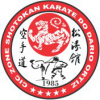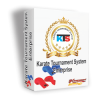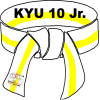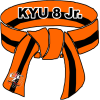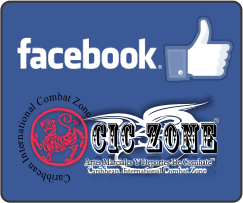As of now, the exact launch date for Path of Exile 2 is still a suspense, but we're eagerly anticipating its grand arrival in 2024! Grinding Gear Games, the developers affirm that the game is still under Path of exile currency development and will only be unveiled when it's fully refined and ready to amaze. Regardless, by scrutinizing the firm's historical release patterns and development stages, we can confidently predict when it might be launched.
Considering the substantial exaggeration regarding the sequel's scale and complexity, it's apparent that the development phase might outlast those of the previous expansions. This suggests that fans might have to show a little more patience for the grand unveiling of Path of Exile 2. However, the developers promise to keep the thrill alive by continually rolling out updates and expansions for cheap Path of exile currency the original game, ensuring the players remain hooked and anticipation stays high....
Sign Up
Your Martial Arts Social Media helps you connect and share with the people in your life.
Topic: Path of Exile Currency
Path of Exile Shadow Builds Guide – Dagger, Bow and Mage
by cuipeng202
Shadows really are a hybrid class, utilizing both Dexterity and Intelligence. Hence, the category excels in a range of builds, including mage casters, assassins, plus the popular bow-wield.
“The Shadow worked the dark hours in Oriath, creating an income and a term for himself being a ruthless killer-for-hire. Arrogant and self-assured, he prided himself on his chance to take out his targets aback, before vanishing without a trace.”
POE Currency Shadow Builds – The “Crit-Dagger” 1hp
I would've rather mentioned “Chaos Inoculation” as an alternative to 1hp, playing with the case you’re oblivious as to the that is short for; Chaos Inoculation grants you immunity to Chaos damage but in addition, reduces your maximum health to at least one.
So how may you survive with just 1hp? Well, to begin the CI node is found at the very top of the skill tree, and it’s planning to take you time and effort to reach there. Until then, your character is going to be ready for your inevitable.
This build specializes in high Critical damage and chance with substantial leech towards your Evasion Shield. Your Shield basically will be the thing keeping you alive. The “Ghost Reaver” node will apply leech towards your Shield instead so because of this, your high crit-damage will make sure that the Shield stays healthy.
buy path of exile currency Shadow Builds – Shadow Ethereal Knives Hybrid Tank
Another caster built, this blog focusing on resilience and Ethereal Knives. You’ll easily plow through till late-game when playing the default Normal. Things will pick up from cruel and it’ll rely on how well you’ve been building your character.
Taking good things about your bonus Intelligence and also the “Lord in the Dead” node, undertake “Raise Zombie and Specter” together with your wand. They’ll be really handy in containing a horde. Perhaps add a “Minion Life” gem too to boost their maximum health insurance and make them are...
Some Tips for Path of Exile Passiv Skill Tree, Exile Passive Tree Explained
Looking for all the details on Path Of Exile’s Atlas passive tree? Path Of Exile is best known for its massive, complex passive skill tree, so it should be no surprise that the Siege of the Atlas expansion introduced another. we have introduced the path of exile items, affix, sockets and skill gems on IGV.com before, next, let's moving to the guide for another necessary part of the game, path of exile passive skill tree with tips and tricks for poe beginners.
Path of Exile Passive Tree Explained
POE passive skill tree is an abundant web of 1384 skills that may give passive bonuses to the character. The tree is available for every player, but different classes start utilizing the tree at different places. When leveling up, the gamer receives an ability point. The skill point enables the gamer to allocate a node on the tree. The size of the skill tree node can determine how it can strengthen the skill. The larger the node the bigger attribute and effect it can provide for the character. Large nodes directly affect the professional characteristics and role ranking. Players can even build their own character leagues with unique skills and equipment by using the talent tree. Besides, the POE skill tree includes jewel sockets. Jewels can be inserted in the sockets to give certain buffs and abilities. When a player finds better jewels for their class, the old ones may be replaced.
Want to know some tips for Path of Exile Passive Skill Tree?
Path of Exile Passive Skill Tree
The POE passive tree is focused on 3 forms of potential (strength, intelligence, and dexterity) to strengthen the ability of 7 characters, which are duelist, templar, witch, ranger, marauder, shadow, and scion. per ten strength increases 2% melee physical harm and five maximum life, per ten intelligence adds five further mana and 2% maximum energy shield, per ten dexterity increases 20 extra accuracies and 2% evasion.
You can get 1 skill point every single time you level up on certain quests inside the game, the maximum Path of Exile level is one hundred, but usually do not count on to attain that as you will discover massive diminishing returns on knowledge in the game end plus the experience loss on death, which may be devastating, the recommended level is 90 which leaves you with about 110 ability points to spend within the tree you can use as effectively as you possibly can.
First, you'll need to consider is definitely the form of character, the starting character will influence your following choices for the reason that you may need to fill out the tree as outlined by the main talent or PoE things you wish to construct, determine what style you are going to play and what keystones they might need
Second, you will wish to grab as lots of percent life or energy shield nodes, remember that enough life will be the most important issue, irrespective of you against the monster or comprehensive other missions, the advice to shoot for is about 180 to 200 % boost max life or 200 to 250 percent max power shield.
Third, always to just fill out the rest with the points into offensive nodes, dual sockets or temporary resistance node, for a starting character, it truly is advisable to pick a strength-based class like the duelist, templar or marauder on the left side in the Poe passive tree simply because life-based characters will be the most straightforward and low-cost characters to link, you could save the PoE currency and have the access to have by far the most quantity of life nodes inside the skill tree.
Main Stats of Skill Tree in Path of Exile
The skill tree in Path of Exile works on a pattern. The strength nodes can be found in the bottom left. You can also find them periodically scattered throughout the entire tree, similarly for dexterity and intelligence.
Clusters
Clusters are the circular groups of nodes in the skill tree that share common effects. Suppose a cluster has a dagger inside it. It means this will affect your dagger abilities.
Milestones
Milestones are likely to change the whole new fighting style for your character.
Blood Magic
Blood magic is used to remove all mana from your character. Blood magic changes the total fighting style of your character.
Resetting the build
It is possible in the Path of Exile to erase the previously made build. It is a very expensive process, especially on the older servers. Each passive skill refund has to be done separately with the Orb of Regrets, which are the rare currency drops. Most likely, you won't find enough of those during your gameplay, so if you want to reset your build, keep in mind that it will take a considerable amount of other resources.
Your character class like Marauder, Ranger, Witch, Duelist, etc. cannot be changed after you start the game with it. Because of that if you are planning to switch build multiple times - consider picking a Scion class that allows combining multiple paths of character building. It is expensive to refund points of passive skills but it is still better than to start from scratch. Keep in mind that it is better to be a jack of all trades than to be master at none.
There is only one instance where you can completely reset your Passive Skill Tree. If Grinding Gear Games drastically alters the skill tree between seasons, the studio may offer a complete, free reset for players. But this isn’t exactly a reliable occurrence. If you’re desperate for a more powerful build, the best advice is to simply start over, or go to https://www.igv.com/POE-Currency for professional help. You also can Buy poe buy exalted orbs at IGV...
Topics:
Path of Exile Currency, Igvault
Path of Exile 2 for PlayStation and Path Of Exile 2 Gameplay
Path of Exile 2 will be the next iteration of Grinding Gear Games hit dungeon-crawler, but if you’re wondering when the game comes out along with everyone else, we will go through everything that we currently have information on at the moment, from the release date to cinematic and gameplay trailers, about the next expansion of the Path of Exile title, Path of Exile 2.Since it is several months away since the release of Path of Exile 2, it is the correct time to stock Path of Exile Currency , you can come to IGV for help.
Path of Exile 2 for PlayStation
Grinding Gear Games has officially announced that Path of Exile 2 is going to launch on platforms such as PlayStation 4, Xbox One, and Microsoft Windows. Path of Exile has proved to be one of the best free-to-play game on PlayStation 4. Now, it seems like its sequel could be a lead title on PlayStation 5.
Sony’s PlayStation 5 and Microsoft’s next Xbox, currently codenamed Project Scarlett, both have a release window sometime during Holiday 2020. Path of Exile 2 is among the few titles we guess might be released on the new generation of consoles.
Path of Exile 2 trailer
So far in the previews we’ve had a look at the new character selection, in which your chosen hero is the only survivor of a mass public hanging – setting that dark, hopeless tone PoE is known for.
We also got a look at some of the new environments coming for PoE 2, including a stage that’s entirely on the top of a giant Mad Max-like vehicle.
The release of a second trailer (seen above) in April 2021 gave us even more of a look at the new world, the Vastiri Desert region, dungeons, and enemies as well, but still no hint at a full release date.
Path Of Exile 2 Gameplay
In terms of gameplay, Grinding Gear Games boasts the “One Game Two Campaigns” feature since as stated earlier, Path of Exile 2 will only be an expansion to the main game.
The expansion will be a new seven-act storyline that is available alongside the original Path of Exile campaign.
Grinding Gear Games also stated on the page of Path of Exile 2 “Both the old and new storylines lead to the same shared Atlas endgame. Path of Exile 2 retains all expansion content that has been created over the last six years and introduces a new skill system, ascendancy classes, engine improvements, and more.”
In Path of Exile 2, the original character class archetypes are retained but new Ascendancy Classes were added. These original classes include Marauder, Duelist, Ranger, Shadow, Witch, Templar, and Scion.
From there, players can pick from a set of 19 new Ascendancy Classes that vary from the old ones that are still available in the Path of Exile campaign.
Aside from that, Path of Exile 2 introduces the next generation of Path of Exile’s iconic skill system.
“Support Gems are now socketed directly into Skill Gems, removing many of the frustrations present in the old system while maintaining all the previous depth” Grinding Gear Games stated.
It is now possible to six-link every skill your character uses.
Moreover, the entire progression of armor and weapons has been overhauled as well as the designs of new character models and animations. Nevertheless, all the old microtransactions items will still be compatible in Path of Exile 2.
Customizing your playable character is the most enjoyable moment for the gamer. And you are going to have more fun in Path of Exile 2. Rumors are that you will get many armors and weapons in Path of Exile. PoE currency is essential in the game, which helps you build your gear for the end game builds and gives you a steady start. This is especially true for new players who lose interest in the journey to the end game. Try out the unique skills and enjoy the various builds by farming PoE currency. You also can Buy Cheap PoE Currency from https://www.igv.com/POE-Currency...
Topics:
Path of Exile Currency, Cheap PoE Currency
Path of Exile 2 for PlayStation, Gameplay, Trailer
Path of Exile 2 will be the next iteration of Grinding Gear Games hit dungeon-crawler, but if you’re wondering when the game comes out along with everyone else, we will go through everything that we currently have information on at the moment, from the release date to cinematic and gameplay trailers, about the next expansion of the Path of Exile title, Path of Exile 2.Since it is several months away since the release of Path of Exile 2, it is the correct time to stock Path of Exile Currency , you can come to IGV for help.
Path of Exile 2 for PlayStation
Grinding Gear Games has officially announced that Path of Exile 2 is going to launch on platforms such as PlayStation 4, Xbox One, and Microsoft Windows. Path of Exile has proved to be one of the best free-to-play game on PlayStation 4. Now, it seems like its sequel could be a lead title on PlayStation 5.
Sony’s PlayStation 5 and Microsoft’s next Xbox, currently codenamed Project Scarlett, both have a release window sometime during Holiday 2020. Path of Exile 2 is among the few titles we guess might be released on the new generation of consoles.
Path of Exile 2 trailer
So far in the previews we’ve had a look at the new character selection, in which your chosen hero is the only survivor of a mass public hanging – setting that dark, hopeless tone PoE is known for.
We also got a look at some of the new environments coming for PoE 2, including a stage that’s entirely on the top of a giant Mad Max-like vehicle.
The release of a second trailer (seen above) in April 2021 gave us even more of a look at the new world, the Vastiri Desert region, dungeons, and enemies as well, but still no hint at a full release date.
Path Of Exile 2 Gameplay
In terms of gameplay, Grinding Gear Games boasts the “One Game Two Campaigns” feature since as stated earlier, Path of Exile 2 will only be an expansion to the main game.
The expansion will be a new seven-act storyline that is available alongside the original Path of Exile campaign.
Grinding Gear Games also stated on the page of Path of Exile 2 “Both the old and new storylines lead to the same shared Atlas endgame. Path of Exile 2 retains all expansion content that has been created over the last six years and introduces a new skill system, ascendancy classes, engine improvements, and more.”
In Path of Exile 2, the original character class archetypes are retained but new Ascendancy Classes were added. These original classes include Marauder, Duelist, Ranger, Shadow, Witch, Templar, and Scion.
From there, players can pick from a set of 19 new Ascendancy Classes that vary from the old ones that are still available in the Path of Exile campaign.
Aside from that, Path of Exile 2 introduces the next generation of Path of Exile’s iconic skill system.
“Support Gems are now socketed directly into Skill Gems, removing many of the frustrations present in the old system while maintaining all the previous depth” Grinding Gear Games stated.
It is now possible to six-link every skill your character uses.
Moreover, the entire progression of armor and weapons has been overhauled as well as the designs of new character models and animations. Nevertheless, all the old microtransactions items will still be compatible in Path of Exile 2.
Customizing your playable character is the most enjoyable moment for the gamer. And you are going to have more fun in Path of Exile 2. Rumors are that you will get many armors and weapons in Path of Exile. PoE currency is essential in the game, which helps you build your gear for the end game builds and gives you a steady start. This is especially true for new players who lose interest in the journey to the end game. Try out the unique skills and enjoy the various builds by farming PoE currency. You also can Buy Cheap PoE Currency from https://www.igv.com/POE-Currency...
Topics:
Path of Exile Currency, Cheap PoE Currency
Trending Topics
Top Bloggers

 Add New Blog
Add New Blog

